Whales and other huge sea animals are examples of marine mammals. It is thought that sea monsters, sometimes known as sea monsters, first appeared in aquatic habitats around 50 million years ago. Many of the huge fish in the seas are whales, and there are multiple kinds of whales on the earth, some of which are recognized as the heaviest living animals on the planet.
The blue whale is the most important living creature that has ever existed; the data shown here reveals the largest recorded weight. The heaviest living creatures are all Cetaceans or Marine Mammals, and the 10 Largest Marine Mammals mentioned below with maximum weight and average length.
10. Gray whale
It can identify from grey patches and white mottling on its dark skin. The fighting behavior while hunting is hard that way also called devilfish. The grey whale can be found significantly in the Eastern North Pacific and Western North Pacific, also spotted in the Mediterranean Sea. The population of Gray whale was estimated at over 100,000 in 2007 studies and most of them is in the North Pacific Ocean, lives between 55 and 70 years.
Maximum Mass: 44 tonnes
Avg total length: 44 feet
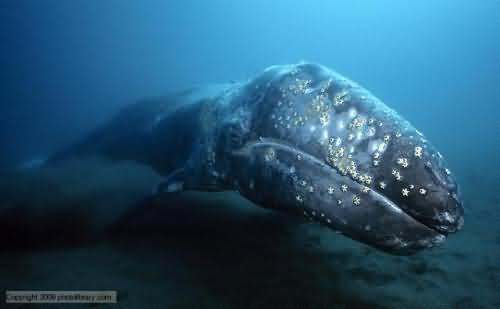
9. Sei whale
The Sie whale was internationally protected when over 225,000 whales were killed for commercial purposes in the late 19th century. In 2008 population of the Sie whale was about 80,000. The Sei whale can consume an average of 900km of food (Copepods, Krill, and other zooplankton) daily. It is faster among all Whales or Cetaceans and can reach speed up to 50km per hour.
Maximum Mass: 45 tonnes
Avg total length: 49 feet
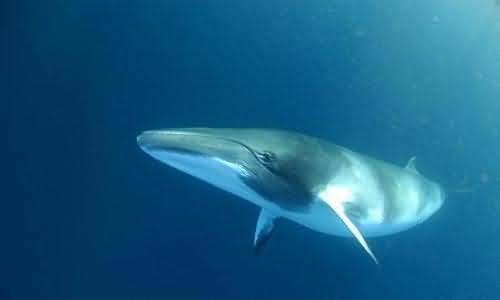
8. Humpback whale
With a distinctive body shape, long pectoral fins, and knobbly head, it is migrating up to 25,000km to tropical or subtropical waters each year. The worldwide population is around 80,000 including 20,000 in the North Pacific, 12,000 in the North Atlantic, and over 50,000 in the Southern Hemisphere.
Maximum Mass: 46 tonnes
Avg total length: 44 feet
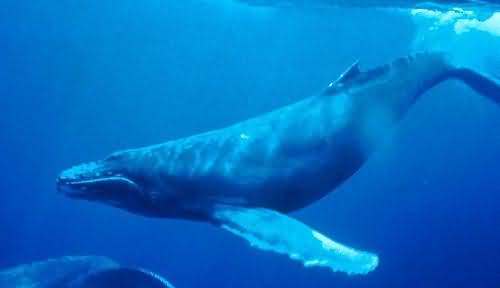
7. Sperm whale
The sperm whale can be found worldwide in the open ocean, live up to 70 years. It prefers ice-free water over 1,000 meters deep and is usually found in deep off-shore waters. The brain of the sperm whale is five times larger than a human’s and the largest of all animals. The large population can be found in the Azores, Caribbean island, and Dominica, around 1 million sperm whales left worldwide are estimated before commercial sperm whaling in the early eighteenth century.
Maximum Mass: 57 tonnes
Avg total length: 43.5 feet
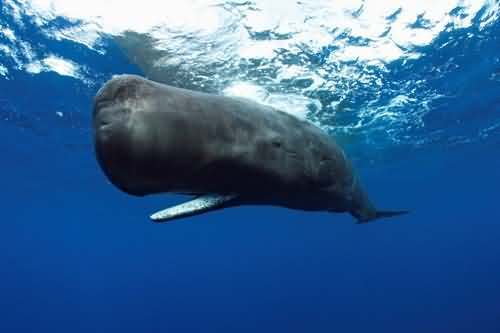
6. North Atlantic right whale
Most endangered whales in the world, and protected under the U.S. Endangered Species Act and the Marine Mammal Protection Act, only 400 individuals are left in the western North Atlantic Ocean. The North Atlantic right whale is also known as the Black right whale, its body of the whale is black with white patches on the belly.
Maximum Mass: 100 tonnes
Avg total length: 49 feet
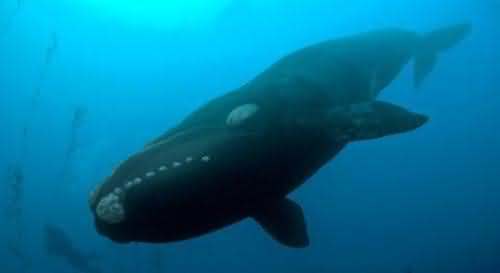
5. Bowhead whale
The bowhead whale is also known as a Greenland right whale or Arctic whale, the largest mouth whole and of any animal in the world. The population is estimated at around 26,000 which is 50,000 before whaling, it is social and nonaggressive, slow swimmer, travel alone or small group. The behavior includes breaches, tail slapping, and spy hopping, the bowhead whale makes underwater sounds to feed, socialize, and communicate while traveling.
Maximum Mass: 105 tonnes
Avg total length: 49 feet
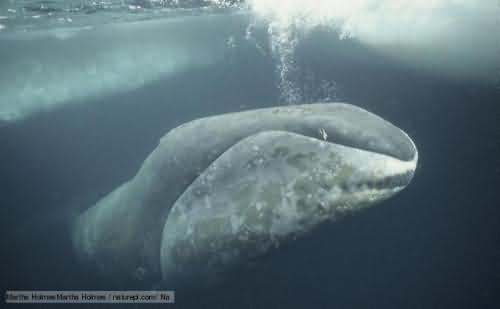
4. Southern right whale
The large population can be seen by the coasts of Argentina, Australia, Brazil, Chile, Namibia, Mozambique, Peru, Tristan de Cunha, Uruguay, Madagascar, New Zealand, and South Africa and a total population of approximately 10,000, it is living in the cold water and cannot cross the warm equatorial water.
Maximum Mass: 110 tonnes
Avg total length: 50 feet
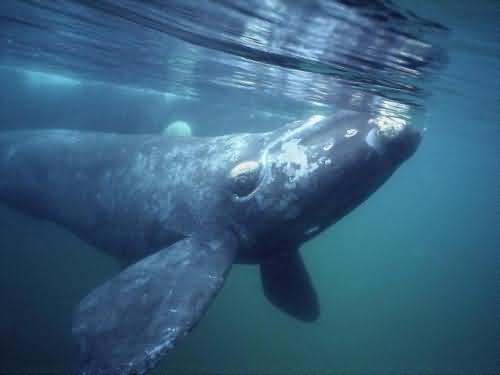
3. Fin whale
Fin whale belonging to the suborder of baleen whales is the second longest and third largest marine mammal in the world, its body shape built for speed and surpass the speed of the fasters ocean steamship. Over 38,000 Fin whales reported living in around Southern Hemisphere, the recent global population estimates around 100,000 to 119,000 Fin whales left today.
Maximum Mass: 120 tonnes
Avg total length: 64.3 feet
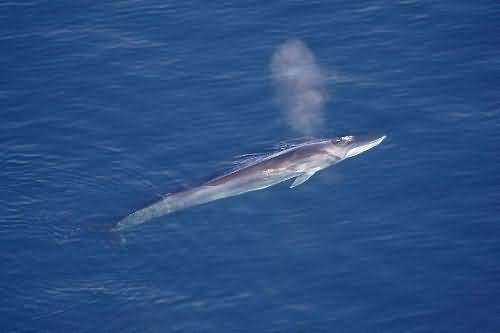
2. North Pacific right whale
One of the most endangered and rare whale species on earth, since whaling between 1835 to 1960 thousands of killed in the Bering Sea and Gulf Alaska by illegal soviet whaling and commercial whaling took down the population to few thousand. The whales are all population found in the North Pacific and the species declared as endangered whale as some few thousands remaining.
Maximum Mass: 125 tonnes
Avg total length: 51 feet
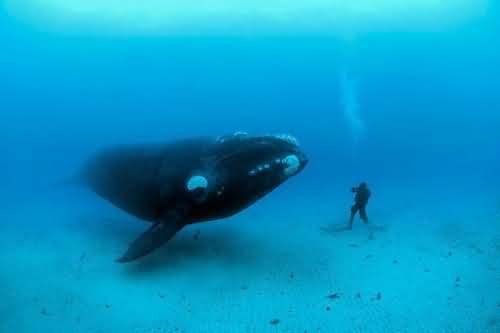
1. Blue whale
The blue whale is the largest known animal ever, the largest population encountered in Antarctica. Krill is the favourite food and can eat up to 40 million krill a day, sometimes eating up to 3,600 kg of krill per day. There are close to 5,000 to 12,000 blue whales living in 2002 estimation, before whaling or hunting of blue whales, it’s numbering approximately 239,000. In 1966 blue whale hunting was banned by the International Whaling Commission.
Maximum Mass: 190 tonnes
Avg total length: 84 feet
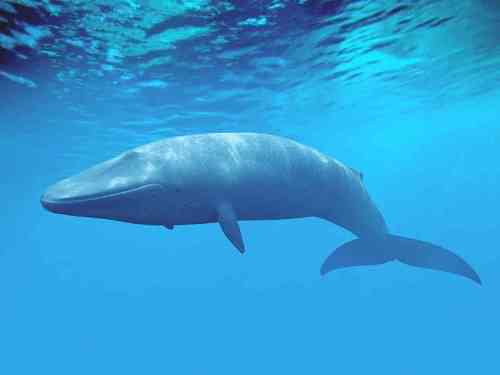
Note: The images used in this post are not ours, we do not have any rights.











